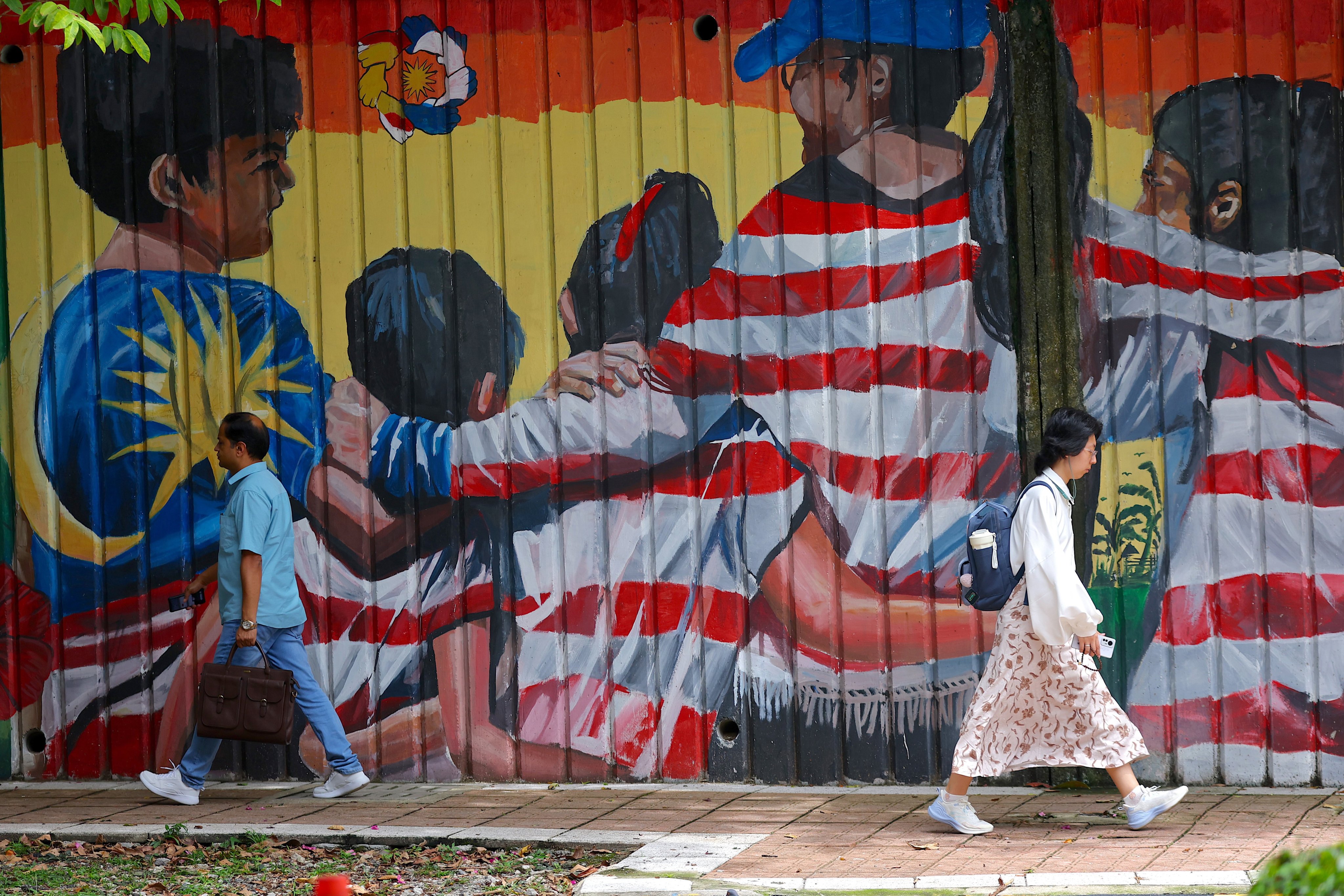Malaysian flag gaffes expose how AI can inflame deep social divisions
Spate of inaccurately rendered national flag images suggests a careless reliance on AI, which can have grave implications in a polarised society

Between US President Donald Trump’s April 2 volley of tariffs and Chinese President Xi Jinping’s three-country stop in Southeast Asia just two weeks later, most of the Asia-Pacific’s attention was captured by the implications of these contrasting developments.
But what happens on the ground in smaller countries offers a more interesting composite of local dynamics that can defy reductive geopolitical narratives. The recent controversy in Malaysia involving the publication of the country’s flag in a local Chinese-language newspaper during Xi’s trip to Kuala Lumpur is just such an example.
In conjunction with Xi’s visit, Sin Chew Daily ran a front page that had the Chinese flag flying alongside what was supposed to be the Malaysian flag – except it was missing its yellow crescent. The crescent symbolises Islam, which Malaysia’s constitution recognises as “the religion of the federation”. Yellow, the colour of royalty in Malaysia, symbolises the country’s system of constitutional monarchy which establishes the Malay rulers as the head of Islam.
In Malaysia’s increasingly polarised society, the backlash was swift and severe; not just from among the Malay-Muslim majority but also from non-Muslims, including Chinese Malaysians who are wary of being scapegoated by association. Fanning the flames of suspicion was incredulity that a newspaper that had operated for nearly a century could have made such a mistake. More than 40 police reports were made in the two days about the misprint.
Sin Chew immediately apologised for its “unintentional technical mistake” and made a digital correction. It also suspended its editor-in-chief and deputy chief subeditor as the news outlet cooperated with official investigations.
But the damage had been done. Some Malays were incensed, perceiving an insidious signalling of loyalties by a Chinese vernacular outlet to the visiting Chinese head of state. In a country where the Malay identity is constitutionally defined by ethnicity and Islam, both of which are upheld by the royal institution, the absence of the yellow crescent in Sin Chew’s flag undermined what some view as the very essence of the nation – Malay primacy.

Worse, to sceptics, this alleged wink of sorts risked inviting external intervention even if Chinese Malaysians themselves have long treated China as little more than a distant, ancestral homeland.
Any notion of China’s interference in Malaysia’s domestic affairs is particularly sensitive, a result of China’s ideological and logistical support of the Malayan Communist Party insurgency in the early 1950s and the exacerbation of communal fractures during the period of emergency declared, when the party waged guerilla warfare against the British colonial administration, and later the independent government of Malaysia.
Unfortunately, apprehensions about the loyalties of Chinese Malaysians have lingered ever since.
As China’s global prominence and influence have risen, and Malaysia’s communal fractures have persisted, the slightest intimations of internal and external exploitation of these cracks can stoke sentiments. In 2015, China’s then-ambassador to Malaysia Huang Huikang caused controversy when he visited Kuala Lumpur’s Chinatown ahead of a planned rally by Malay nationalists, stating Beijing “will not sit idly” by if China’s national interests or those of Chinese citizens or businesses were infringed.
Huang later clarified that, contrary to accusations of interference, his walkabout had been intended to offer a public assurance that “Malaysia was safe despite the threat of a race riot the next day”.
In the Sin Chew case, there appears to be no evidence of malevolence. So it seemed especially egregious when another Chinese-language Malaysian daily, Kwong Wah Yit Poh, blundered in exactly the same way the very next day, depicting the Malaysian flag without its yellow crescent.
The fault, at least in Sin Chew’s case, seems to have been ill-supervised AI use. While no details were released as to whether the offending image was AI-generated, the daily’s pledge to review its procedures “especially in the use of artificial intelligence” hints that timeline pressures may have collided with the lack of AI oversight.
Setting aside questions about the AI prompts and platforms used to generate the erroneous image, the potential need for an identifying watermark in AI-generated outputs and the organisational policies on AI use, what is clear from the Sin Chew case is that at minimum, careful, adult supervision of AI is always needed, even for seemingly quick and easy tasks.
There is an argument to be made for retention of the drudgery AI is supposed to free us from, especially if we end up inadvertently surrendering specific skills and capabilities along the learning curve to the altar of AI. This over-reliance on AI is telling, given that the Sin Chew and Kwong Wah gaffes were followed in quick succession by a similar incident involving a Singaporean company, and one by Malaysia’s education ministry, which added rather than removed an element in the flag.

In Malaysia’s racially charged landscape, prevailing concerns about foreign interference and internal machinations have graver implications with the increasing sophistication of digital technologies. Misinformation and disinformation can result in physical harm and violence, particularly in fractured societies.
Yet an equally serious if underappreciated risk is that over time, people may abandon the rigour of critical research, due diligence and cognitive filtering in pursuit of task optimisation using AI. The costs of technological convenience and presumed efficiency can be terrifyingly high, especially when communal and national identities are at stake.